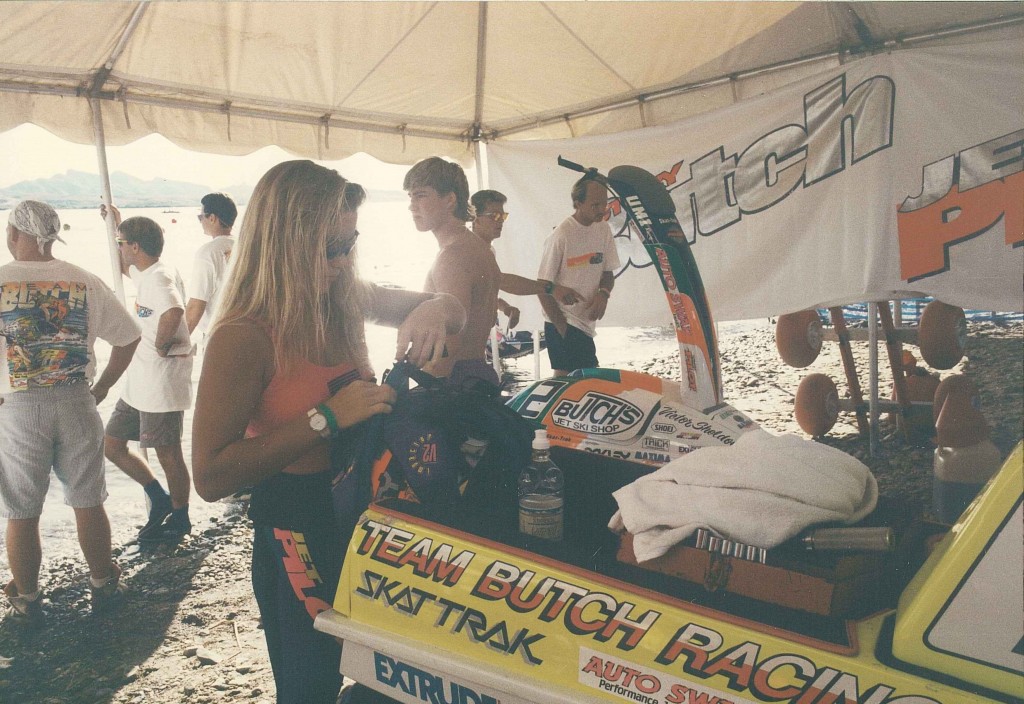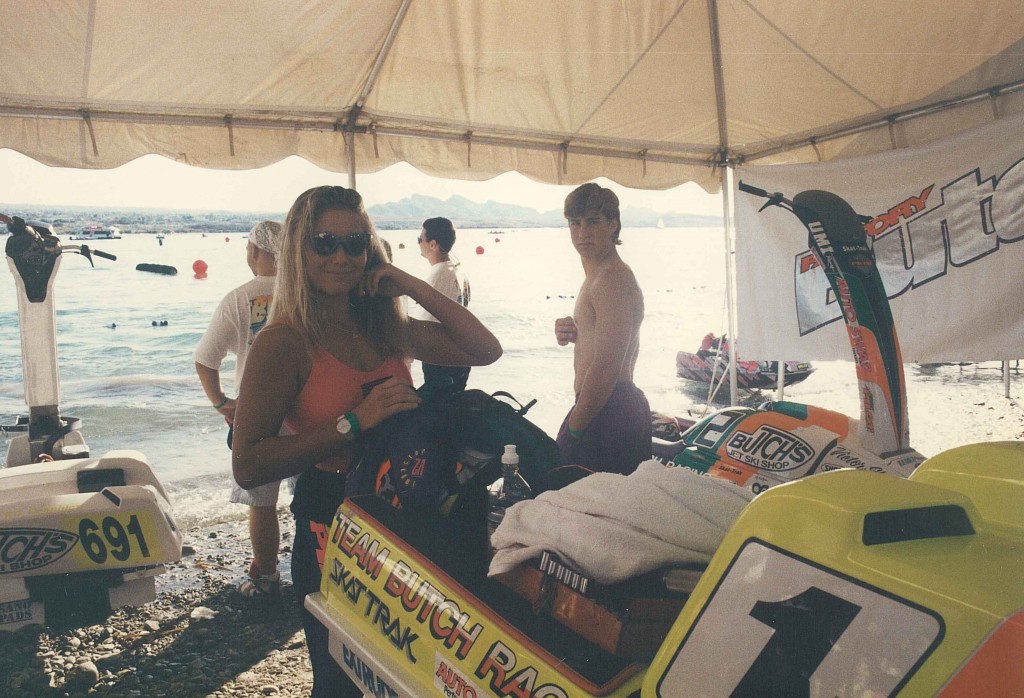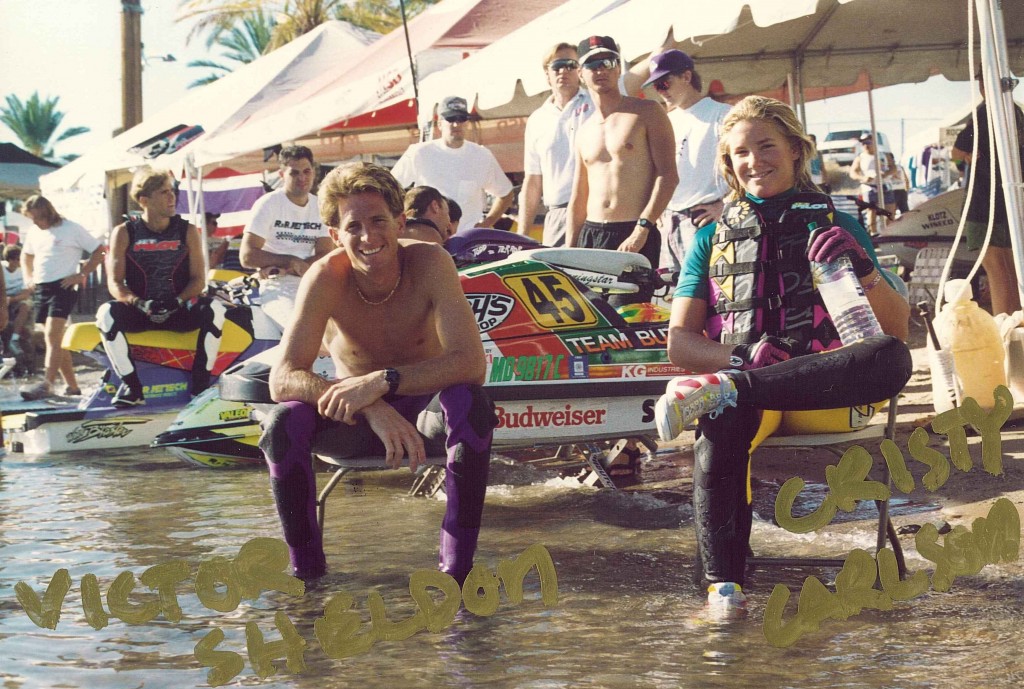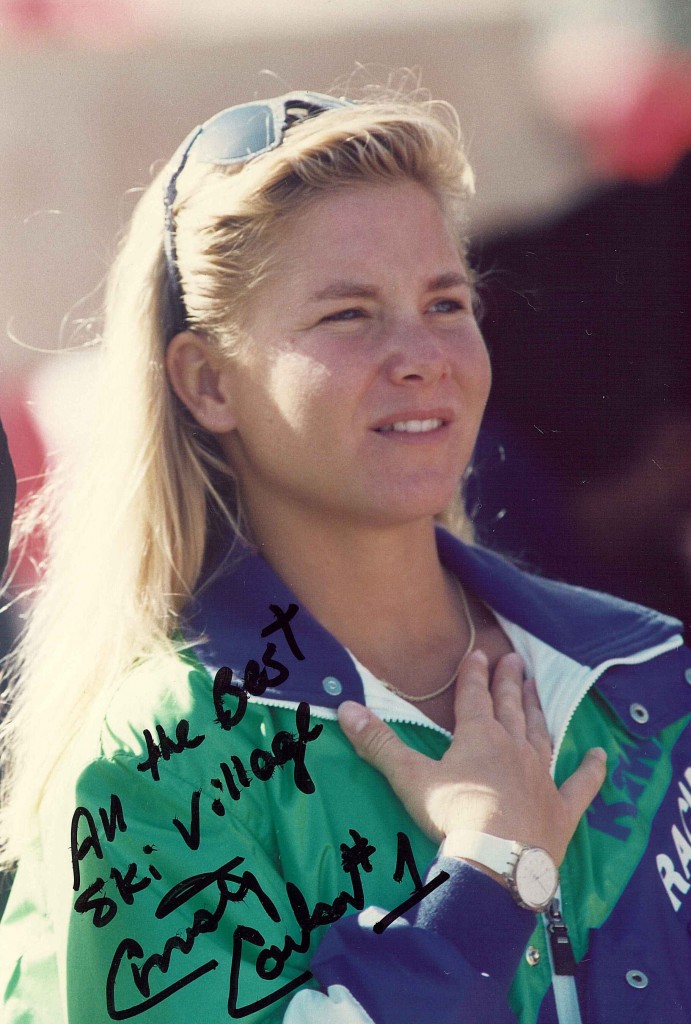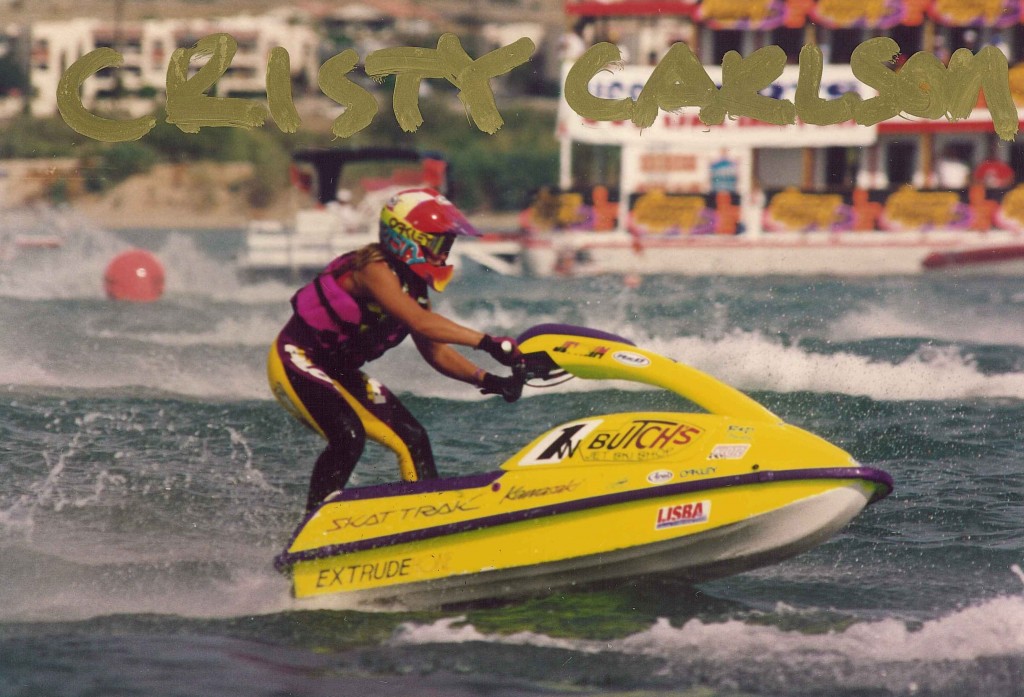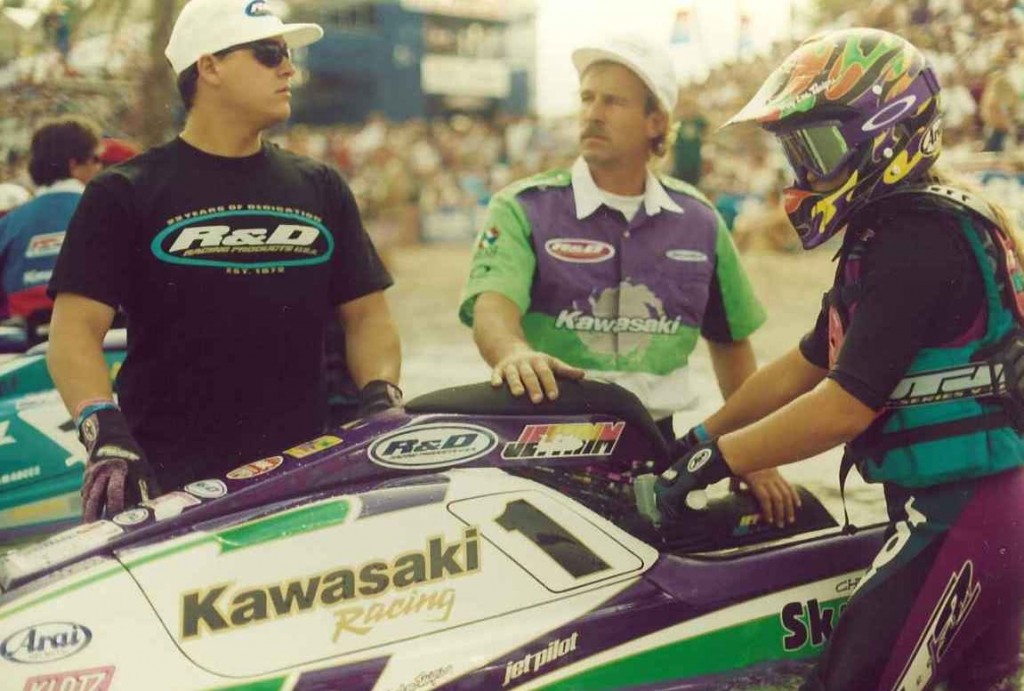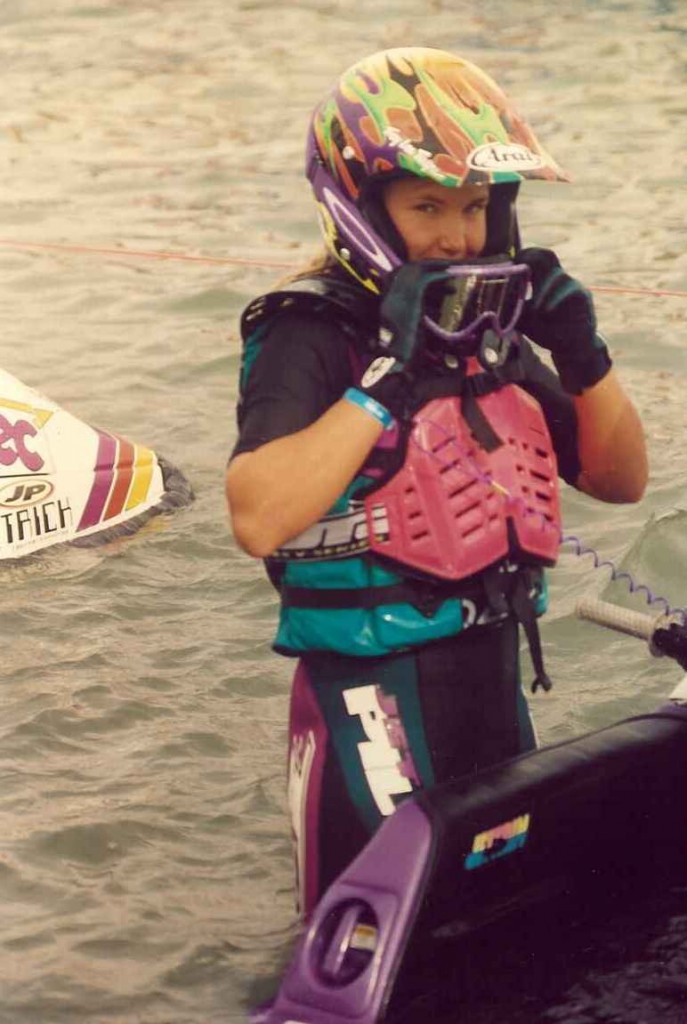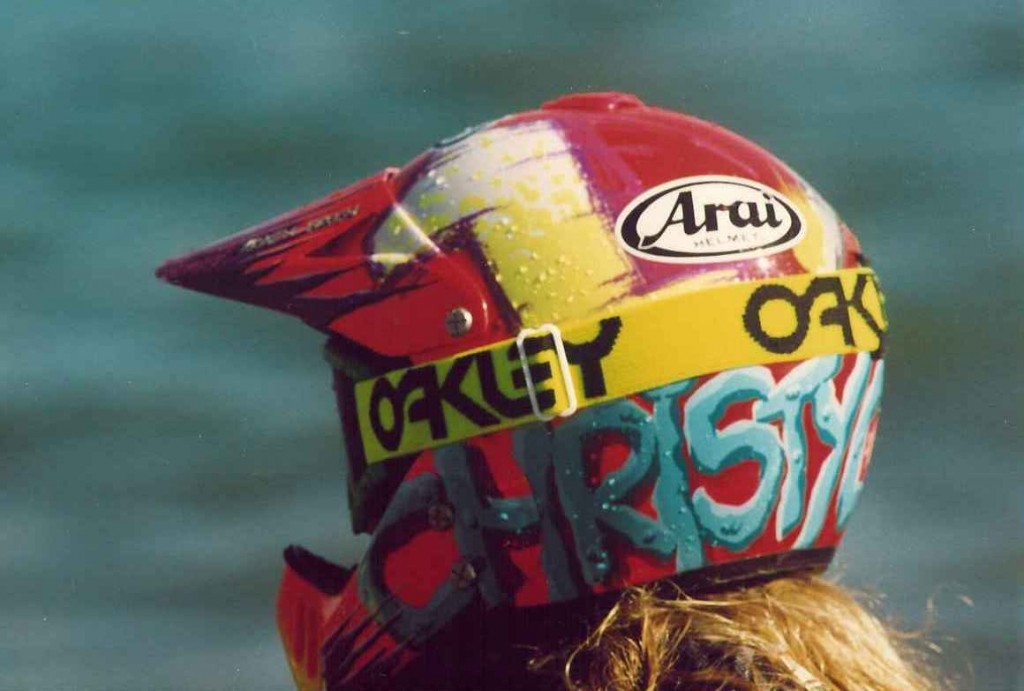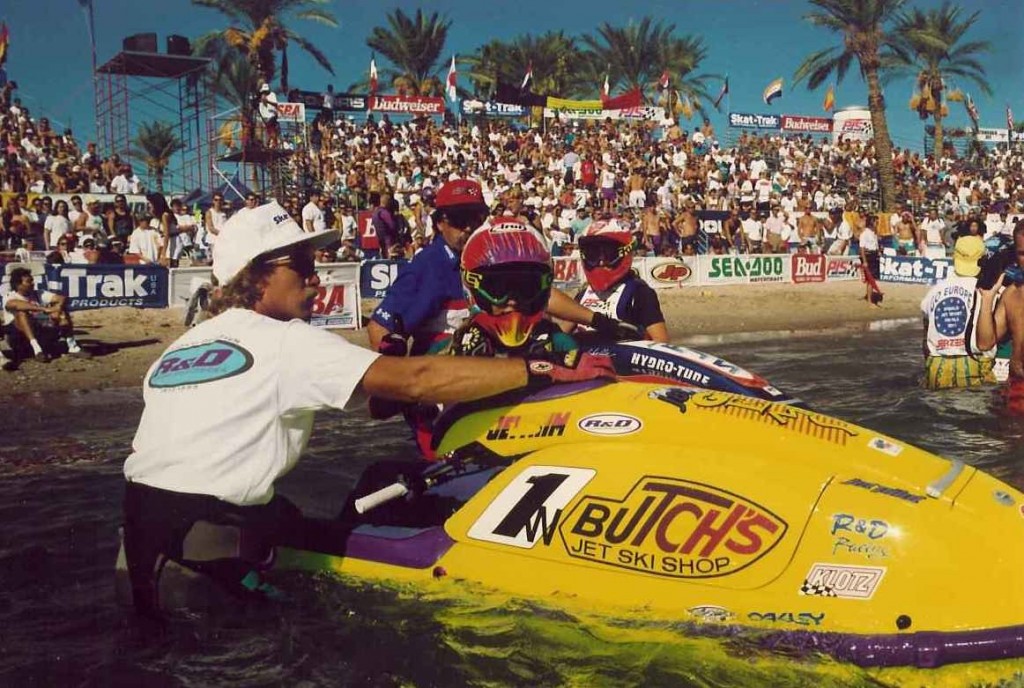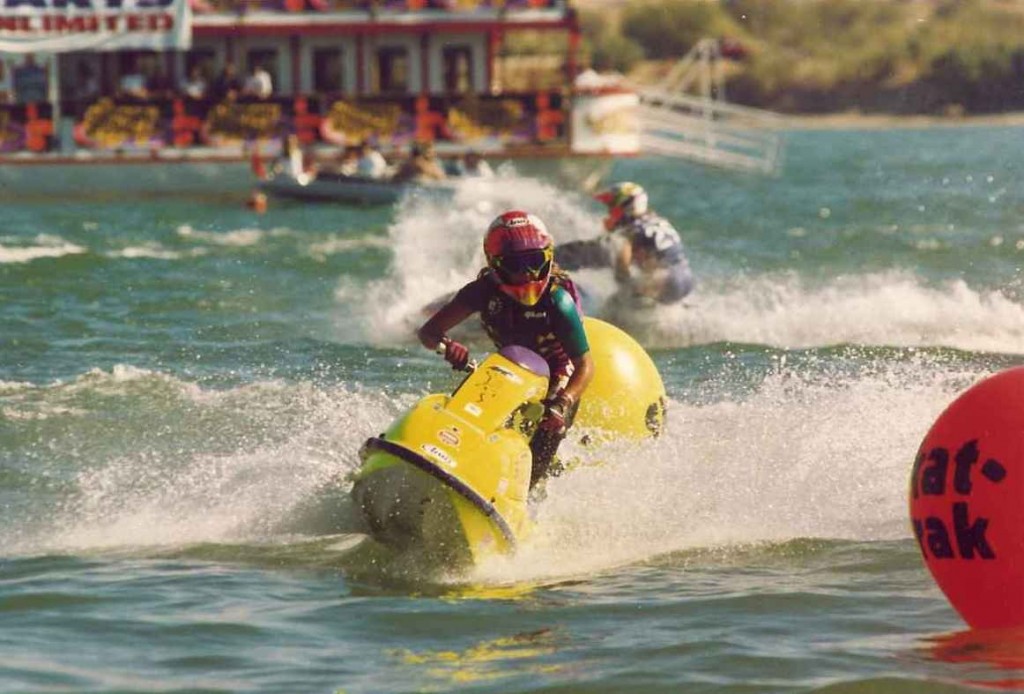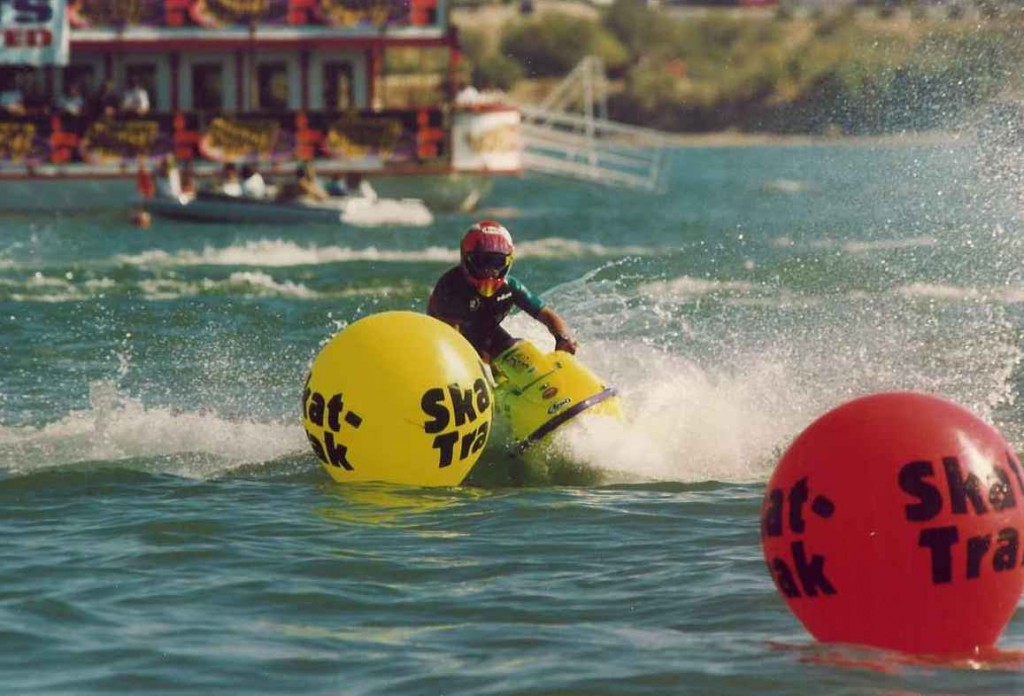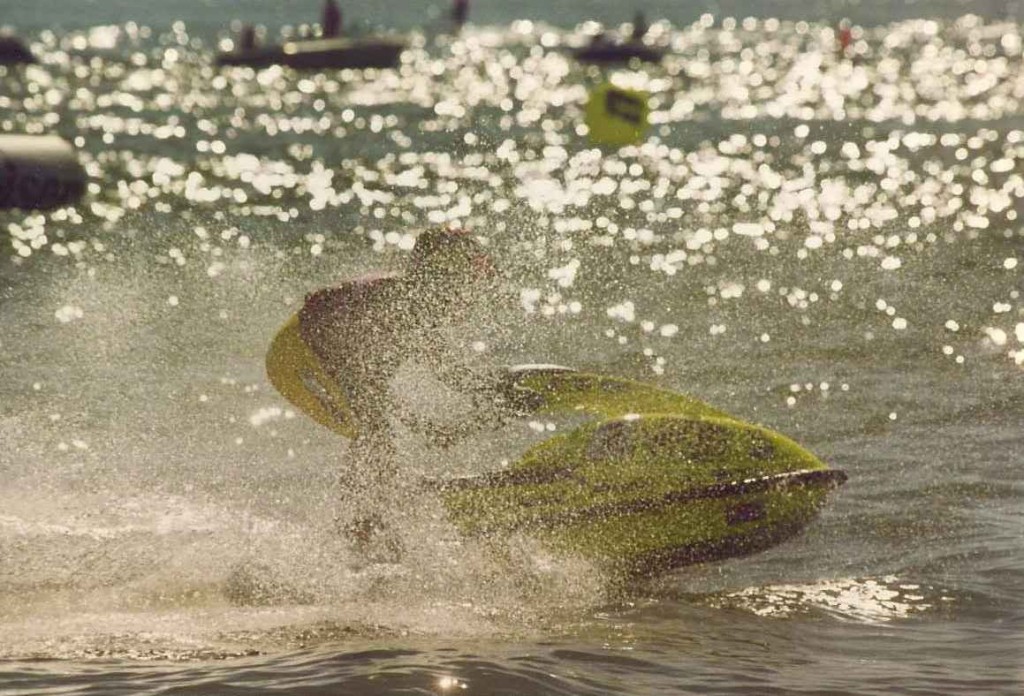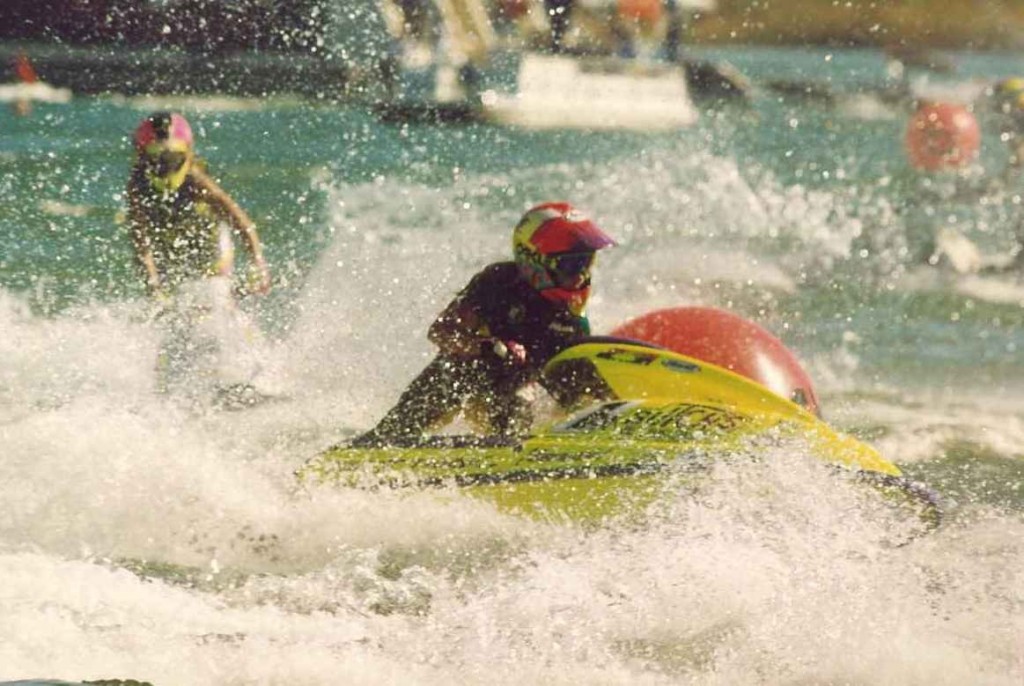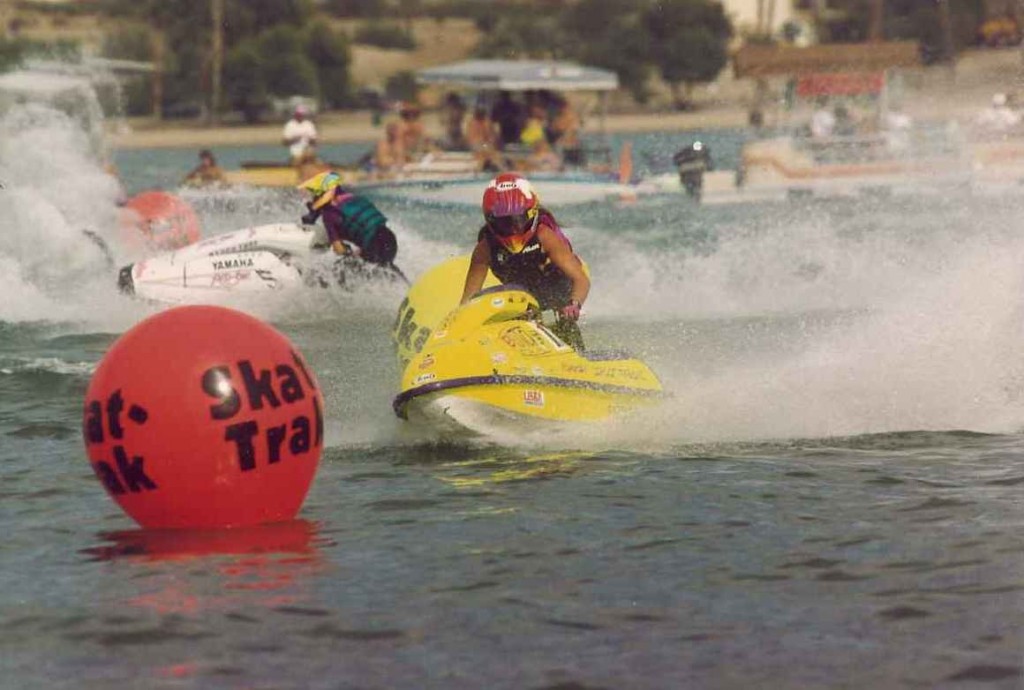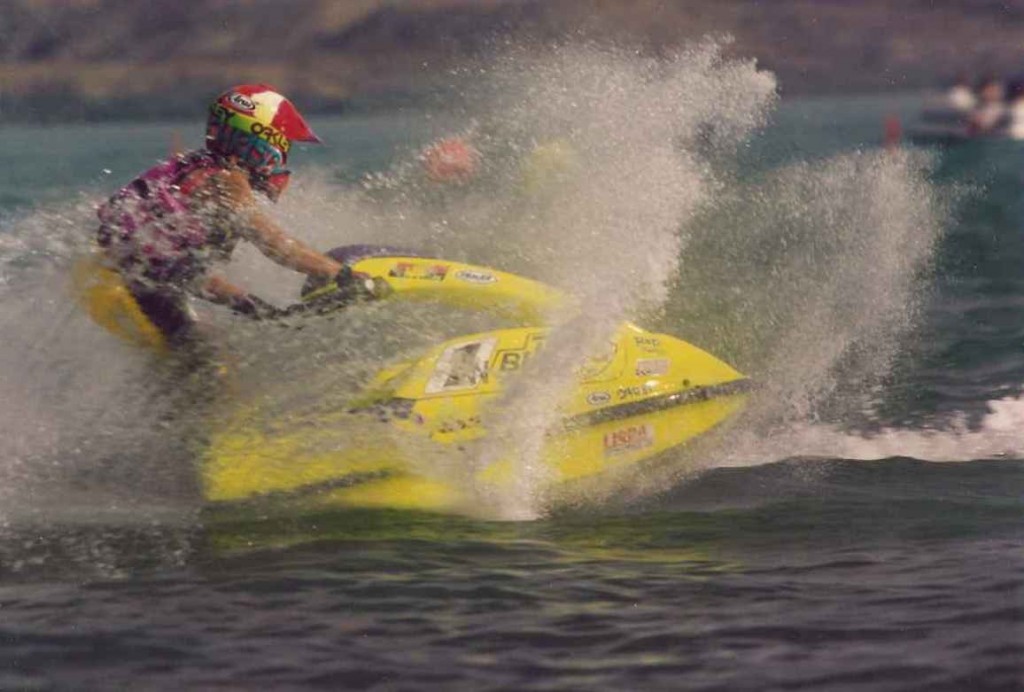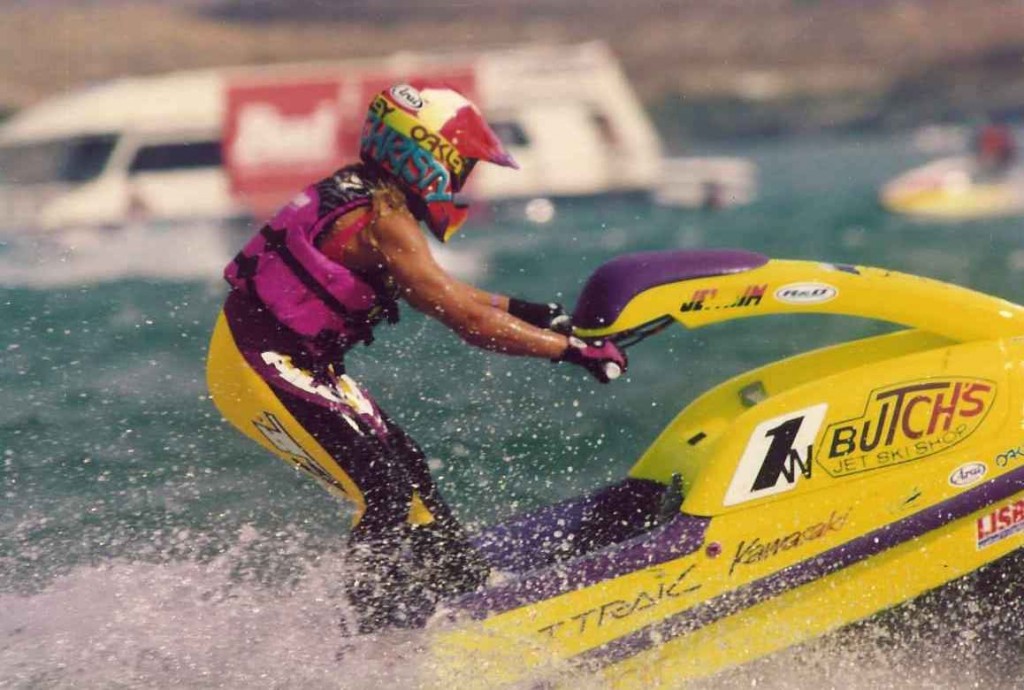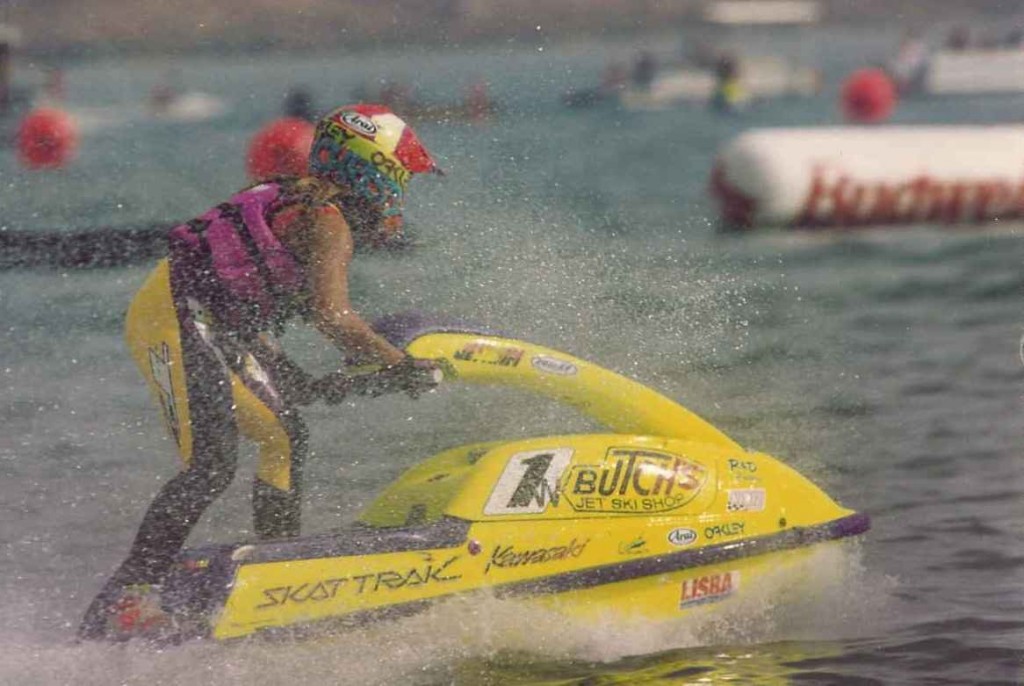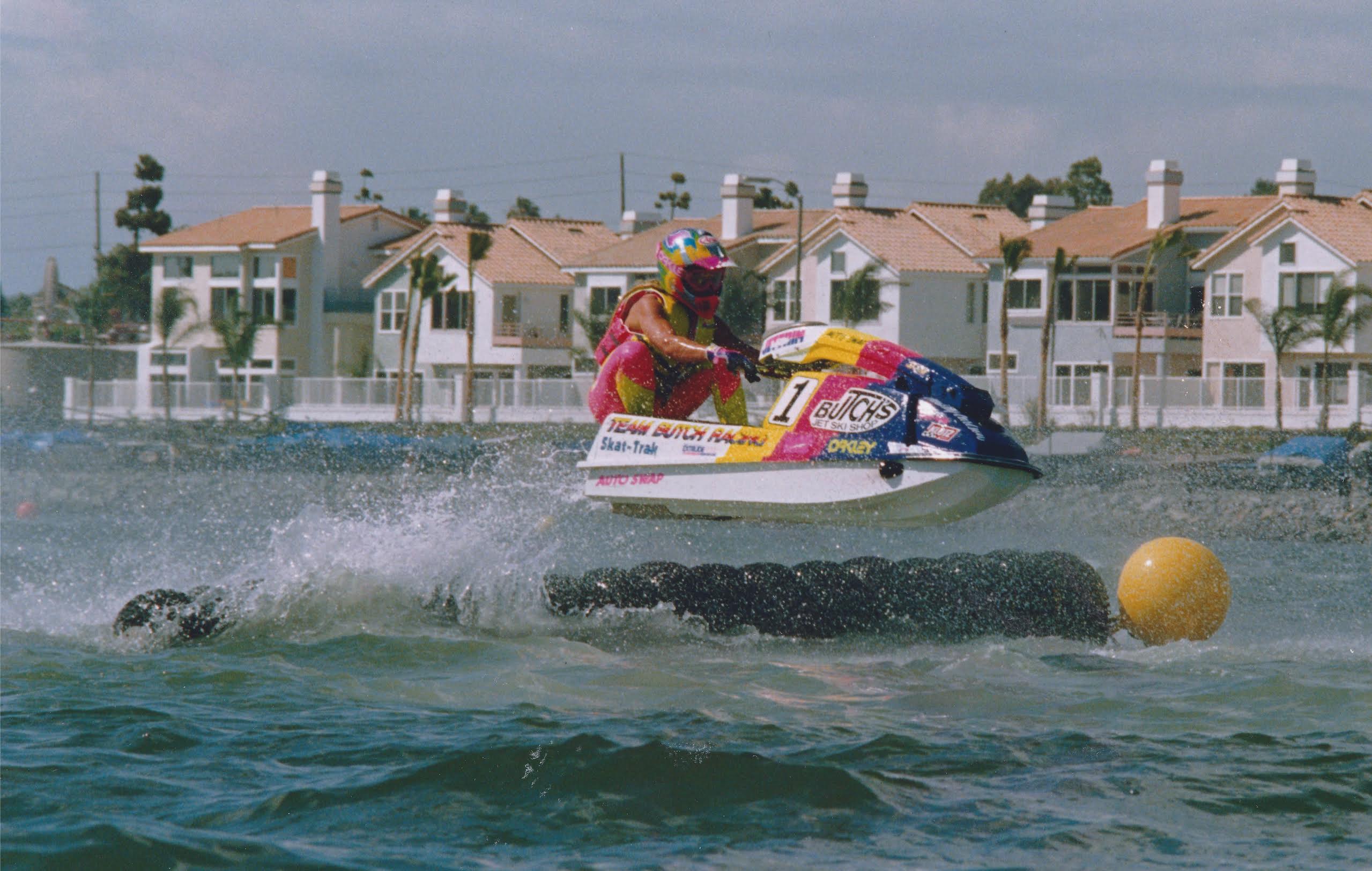
Motor Action Media gets an exclusive interview with the “Blonde-Bombshell”, multi-time world champion and founder of HEAL Alabama, Christy Carlson-Swaid.
Motor Action Media: Could you give me some background as to how you got involved in the sport?
My dad, Richard Carlson moved to Austin Texas in 1977. While selling condo timeshares at Lakeway Resort on Lake Travis, he watched a guy attempt to operate a Jet Ski rental. Jet Skis at the time looked like sci-fi vehicles off of a 007 movie. They were attractive but difficult to ride and maintain. One by one the fleet of Jet Skis broke down, putting the brave guy out of his unusual business. My dad offered him a hundred dollars per ski, took them to his garage and began tinkering. He is a handy guy similar to MacGyver (an old 80’s show for the young audience who wouldn’t know.) He used to maintain yachts and boats of all sizes so he was confident he would figure out how to rebuild the broken down Jet Skis. Soon my dad was the new Jet Ski rental owner/ operator at Lakeway Resort. I was seven years old the first time my brothers and I visited our dad there for our summer break. We all rode the company equipment as a family. The winter was much colder than dad expected, so he packed up his van and a huge trailer with everything he owned and drove to a warmer climate, South Florida. The resorts on the east coast of Florida were not willing to try this risky business so he drove to the southwest coast. He made a wrong turn and got stuck on the causeway bridge forcing him to cross over from Ft. Myers to Sanibel Island, Florida. He found the environment and water conditions better suited for his risky rental business. The management at the CasaY Bell Resort on Sanibel Island agreed to give him a chance to set up an entertainment service for their guests. The resort guests found the Jet Skis to be fabulous and the rental became a great success. He expanded his business to other locations including South Seas Plantation Resort on Captiva Island, Fl. That is where my brothers, Rick and Tim and I spent our childhood riding. We loved exploring all the surrounding waterways. We were used to choppy ocean water and strong currents in the middle of the passes dividing the gulf from the bay. We closed the rental when stormy weather hit and pulled the skis out to ride the waves. My brothers loved to tease and play rough with me. They competed with me on creating freestyle moves and they splashed and tried to make me fall. The skis we rode were beat up rentals with no extra grip on any of the fiberglass surfaces, they had super heavy handle poles and a rubber exhaust pipe that blew hot spray and fumes in your face if you reached for the right side. The best foot grip was the rubber strap that clamped the hood down with a metal buckle. Our freestyle moves were not sophisticated but super challenging no less.
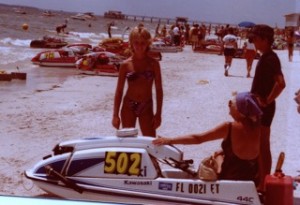 MAM: At what point did you decide to commit to jet-ski racing, what caused you to make that decision?
MAM: At what point did you decide to commit to jet-ski racing, what caused you to make that decision?
My dad received in the mail every magazine and material related to Jet Skis. We memorized every page of the racing magazines and news papers that featured the original racers. Names I can recall from the early 80s were Larry “The Ripper” Rippenkroeger, Flyin’ Bryan Bendix, Pat Helfrick, Mike Castrucci, Cindy Coffman and Celeste Peterson. The next wave of talent was Haulin’ Harry Goatcher, Hollywood Scott Watkins, and David Gordon and Chris Fischetti. Fishchetti sold my dad a ton of wedge floatation devices that strapped to the stand-up jet skis to make them easier for beginners to ride. The extra money helped support Fishchetti’s racing program. On their heels came the riding phenomenon, Jeff Jacobs. Mr. and Mrs. MacCluggage stayed in their cabin cruiser in the South Seas yacht harbor and brought young Chris Macclugage to the rental where he rode Jet Skis for the first time. We had no idea careers were beginning. The first race I was able to attend was in 1984 at age thirteen. The Jet Ski racing tour was scheduled to stop in Ft. Myers, near our home. I never saw anything more fun in my life. I begged my dad to let me give it a try. He told me to pick out my favorite ski off of our rental fleet and signed me up #502. I borrowed a helmet and gloves and played connect the dots riding from one buoy to the next, laughing the whole time. It was like living in a video game.
MAM: Once you became a committed athlete, did you make any changes to your lifestyle? What were they?
Over the years the sport grew in popularity and competition. We had to invent new ways to keep a winning edge. This was true for physical conditioning as well as equipment research and development. I remember simply riding to be competitive to having to add cross-training conditioning to my program, and then it escalated to needing assistance from Olympic level trainers licensed in sports performance and rehabilitation. My training regimen became strict and science-based, utilizing heart rate monitoring technology combined with a lean diet.
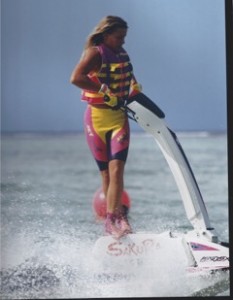 MAM: You are still considered one of the greatest females to ever ride a JS 440, which today is considered one of the hardest skis to ride! How did you train yourself to ride them so well? Any tips for others?
MAM: You are still considered one of the greatest females to ever ride a JS 440, which today is considered one of the hardest skis to ride! How did you train yourself to ride them so well? Any tips for others?
At the time it was all that we had. Everyone faced the same challenge. I laugh now at how awkward the first 440s were. We didn’t even have handle pole springs. The mats were made of a horrible rubber that tore easily. The grips were hard as a rock. The only explanation for how we rode them well is summed up in one word: Practice, Practice, Practice! Bill Chapin was a leader in revolutionizing the comfort and performance of the skis. He collaborated with SkatTrak, Jettrim, and aftermarket part businesses to make the skis fast and comfortable. Jet Pilot also built our suits with technology for comfort and protection. My 440 in 1988 was unbelievably custom. Even the handlebars were bent and cut to match my shoulder width. I was in heaven.
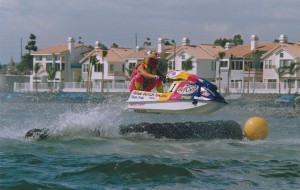 MAM: What can you tell me about being a part of the legendary Team Butch’s jetski team?
MAM: What can you tell me about being a part of the legendary Team Butch’s jetski team?
I have to give credit again to legendary builder Bill Chapin. He contacted Steve Laham at Butch’s and helped put the team together. Victor Sheldon and I were privileged to ride the best equipment in the world. The entire staff at Butch’s were passionate and supportive. We all put our hearts in the effort and pulled off some wins. Those were great years!
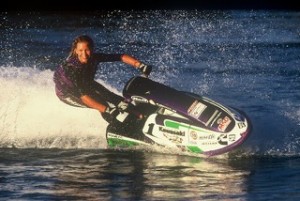 MAM: You were very actively involved in racing when the women transitioned from the JS 440 to the Kawasaki 750, what was that change like for you as a racer?
MAM: You were very actively involved in racing when the women transitioned from the JS 440 to the Kawasaki 750, what was that change like for you as a racer?
Changes were so difficult. With every new hull design, I had to basically learn to ride all over again. My riding style on the original ski would often fight the new hull. I’d cry in frustration after laying the ski on its rail to carve a hard turn (just like always I did on the 440) and pulling nothing but cavitation. I felt like a beginner with a huge learning curve. Bill Chapin had the same frustration when it came to ride-plates, scoop grates, impellers and pipes, etc. New hulls meant hundreds of hours of testing in all weather and temperatures and usually continued well into the race season. The official racing season started in May each year. Our testing began in February/ March in Lake Havasu just as the snow in the Colorado Mountains began melting into the river. My feet felt like lead blocks from being frozen while waiting for the next carb or impeller was ready. I’d jump around in the tray to get the feeling to return. Hypothermia was something we had to suck up. There was no rest or comfort it was all business.
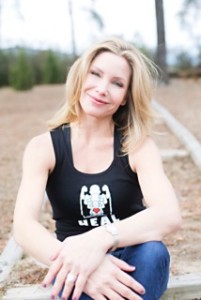 MAM: You are still remembered as a passionate, well rounded and God-loving individual. How were you able to maintain a level head and big heart in one of the most competitive and crazy action sports in the world?
MAM: You are still remembered as a passionate, well rounded and God-loving individual. How were you able to maintain a level head and big heart in one of the most competitive and crazy action sports in the world?
That’s a very kind and generous comment followed by a serious question. I have to give credit to my mom. She helped me connect with reading the Bible, memorizing scripture and having a personal relationship with Jesus. She stayed by my side a prayed with me and for me every step of the way. She yanked me when I was heading in a wrong direction. I’m so thankful for her loving force in my life. The foundation of faith in Jesus combined with a supportive family was and is the most important aspect of my life. Jesus teaches us to work hard, do our best and be good to others. The most fun aspect of living by faith is that Jesus always loves us and He is never done with us. We are all a work in progress and created to do great things. In Christ,we always have an important purpose at every stage in life and He restores us when we make mistakes. My mom says, “The best is yet to come, even when we face the end of our life on earth.” Her quote is based on 1st Corinthians 2:9 “No eye has seen, no ear has heard, and no mind has imagined what God has prepared for those who love him.” Gary Hart made peace with God through Jesus. His party just got started.
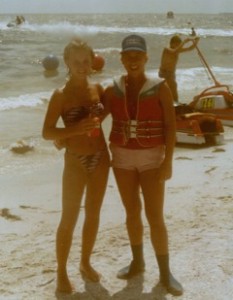
MAM: People still get excited reminiscing on the intense races between you and Tera Laho, are there any other women you particularly enjoyed racing with?
There were epic battles with many great women riders over the years starting with Celeste Peterson 1984 followed by Brenda Burns in 1989 and 90, Reagan Cole 1990-93, then came Tera in 1994 -1996. There were so many other amazing riders I love to think about such as the French champ Karine Paturel, Japanese champ Kumiko Matsuguchi, Michelle Baynes, Dawn “Mad-Dog” Wood, Tina Martinez, and Karen Jacobs. My most admired adversary was Brenda Burns. She was the pro-women’s world champion that I completely admired when I entered the Pro class in 1989. We fought tooth and nail. She was a gracious champion and cheered me on in my pits after she retired. We really had a friendly rivalry. There was a cover on Splash magazine entitled “Friendly Foes” featuring Brenda and me. That summed it up.
MAM: I know that outside of racing you were also involved in television broadcast, stunt doubling and other interesting jobs, could you tell me more about them?
The Screen Actors Guild provided great health insurance. After I did a national Kawasaki commercial, I became a SAG member and took advantage of the health care benefits. I later was fortunate to get a stunt agent in LA who booked auditions for me. A variety of stunts and appearances on shows like Baywatch, Malcolm in the Middle and others still pay residual checks to this day. It was a great secondary source of income during the off-season.
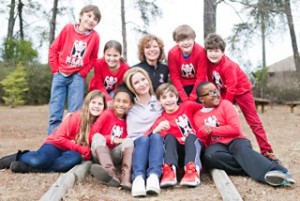 MAM: I know you have been working diligently on HEAL, please give me a little background on how you got that started and what it is today.
MAM: I know you have been working diligently on HEAL, please give me a little background on how you got that started and what it is today.
In 2002 just after becoming a resident of Alabama, I switched my advocacy focus from marine safety to children’s health. The childhood obesity epidemic immediately caught my attention.
Seeing children suffer from symptoms of early diseases due to a lack of exercise and nutrition lit a passion in my heart. My goal was to research and design the most effective approach to help Alabama’s children step off of a path of disease and on to a path of wellness. With my husband’s total support and medical expertise, I created HEAL Alabama. HEAL stands for Healthy Eating Active Living and is a health and fitness based physical education curriculum for elementary school-age children. We all know the only way to help children get healthy and fit is to provide an environment where they can practice healthy habits regularly under the supervision of trained, motivated qualified professionals. I decided the most powerful platform to help Alabama’s children adopt healthy habits would be the physical education class period in schools. I pulled a team of Alabama’s brightest professors, doctors and specialists to help me write daily lesson plans that fulfill Alabama state standards for physical education and at the same time teach children to make healthy food choices and to exercise in their healthy heart zone. What started off as an experiment in one school in 2002, became a 501C3 nonprofit organization in 2007. Today, HEAL serves 88 schools and 15,000 children, statewide. Science-based outcomes prove that over 70% of children enrolled in the HEAL program significantly improve their health with in 7 months. HEAL is endorsed and adopted by the Alabama State Department of Education to represent the elementary curriculum component of the Alabama State Coordinated School Health Plan. Overweight children are at risk for early hypertension, heart disease, sleep apnea, and diabetes. Poor physical health leads to low self-esteem, bullying, depression, and poor performance in school and in social situations. Children are our most precious resource and are our future. Providing them with a foundation for good health will help them reach their potential and enjoy a better quality of life. Investing in our children is investing in the future of America.
In addition to being involved with HEAL, Christy has won several awards for her work:
- 2012 Childcare Resources Children’s Advocate Award; for dedicating extraordinary time, talents and resources to improving the lives of children in Alabama.
- Alabama State Association for Health, Physical Education, Recreation and Dance Angie 2014 Nazaretian Lay Leader Award; for collaborating to improve health and physical education programs across the state.
- 2015 SHAPE America Southern District Clyde Partin Service Award; for making a significant contribution to SHAPE America Southern District serving as an advocate for quality programs that encourage healthy, physically active lifestyles with-in the district’s thirteen states: Alabama, Arkansas, Florida, Georgia, Kentucky, Louisiana, Mississippi, North Carolina, Oklahoma, South Carolina, Tennessee, Texas and Virginia. Southern District .
- 2015 Nomination for UAB Outstanding Woman in the Community: UAB School of Public Health; for serving as an excellent role model for females of every age and background.
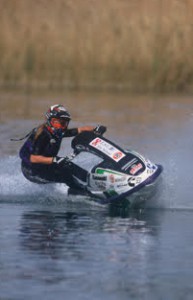 MAM: What are some of your favorite memories from your time in the industry?
MAM: What are some of your favorite memories from your time in the industry?
As they say, life is a journey not a destination. I am touched by the hundreds of hours, days, months and years spent riding in all conditions, traveling to far places, practicing to the point of tears, victories and defeats, celebrating victories and picking up the pieces. I see the precious faces of my dedicated family, friends, teammates and helpers. I am grateful to have lived the lifestyle. All the memories have led to who I am today. I’m thankful for all of them.
MAM: I know there are many people who were inspired by you. Brian O’Rourke, founder of the famous Team Faith was so inspired by your bible studies and leadership at races that he has started the same at races all around the country. How does it make you feel to know your legacy still remains?
I feel totally humbled, thankful and prayerful to live up to such an honor and to walk by faith each day.
MAM: What advice do you have to young racers who want to become role models in the industry some day?
First, I challenge all young racers to give your very best every time you show up for practice or competition. Second, never compromise your schoolwork for sports. Sports will end but your education will continue to carry you. Third, I encourage you hold on to Godly values. You will never be disappointed if you do. This goes without saying but stay away from drugs and alcohol. There is so much suffering caused by this.
MAM: What would you say is the most important thing you learned from being a part of the industry?
The most important things I took away from racing are the experiences I draw from to help me raise my kids. Racing puts everyone to the test on many levels. Character is built through dealing with pressure. The pressure of racing has given me good and bad experiences to use to help me coach my kids through life. Raising children is the most extreme of all sports and the most rewarding responsibility I’ve ever had. Moms and Dads need to be trained up and on their game if they want to get it right. The apostle Paul compares life to a race in 1 Corinthians 9:24, “Don’t you realize that in a race everyone runs, but only one person gets the prize? So run to win! (25) All athletes are disciplined in their training. They do it to win a prize that will fade away, but we do it for an eternal prize. (26) So I run with purpose in every step. I am not just shadowboxing. (27) I discipline my body like an athlete, training it to do what it should. Otherwise, I fear that after preaching to others I myself might be disqualified.” (New Living Translation) Many lessons about life can be learned through the demands and pressures of racing.


